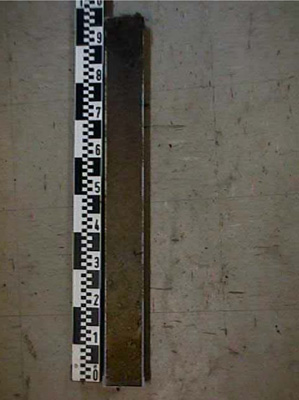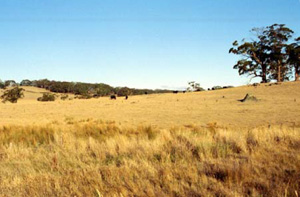BD8
|
| BD8 |  Melanic, Mottled-mesonatric, Grey Sodosol | |
| Lal Lal | |||
| Undulating rises | |||
| Devonian granite | |||
| Hillcrest | |||
| 3–5% | |||
Horizon | Depth (cm) | Description | ||
A1 | 0–24 | Very dark grey (10YR3/1); loamy sand; moderate structure; friable; pH 6.5; water repellent; gradual boundary to: | ||
A2 | 24–77 | Pale brown (10YR6/3); loamy sand; apedal massive structure; pH 6.0; clear boundary to: | ||
B2 | 77–100+ | Light brownish grey (10YR6/2) with many yellow mottles; sandy clay; apedal massive structure; pH 5.5. | ||
| Management considerations | ||||
Granitic soil in the virgin state is unsuitable for cropping, however after several years under pasture, good crops of oats, wheat, barely and peas can be grown where waterlogging is not a problem. In most of the granitic country, the impermeable subsoil or bedrock is too close to the surface (within half a metre) and winter waterlogging results in very disappointing crops. However, there are some localised areas where the topsoil is deep enough or the subsoil permeable enough that waterlogging is not a problem and quite good crops can be grown. Summer fodder crops and potatoes can be grown, but without irrigation, yields can be poor in dry seasons. Potatoes must be dug in autumn to avoid winter waterlogging. The granitic soil is best suited for growing pasture. Compared with the heavier soils of the district, granitic soil needs a smaller amount of rain to start autumn growing. Consequently, autumn and winter growth of pastures can be very good. However, because of a poor water storing capacity, spring growth usually finishes earlier on the granitic soil than on the heavier soils of the district. | ||||



